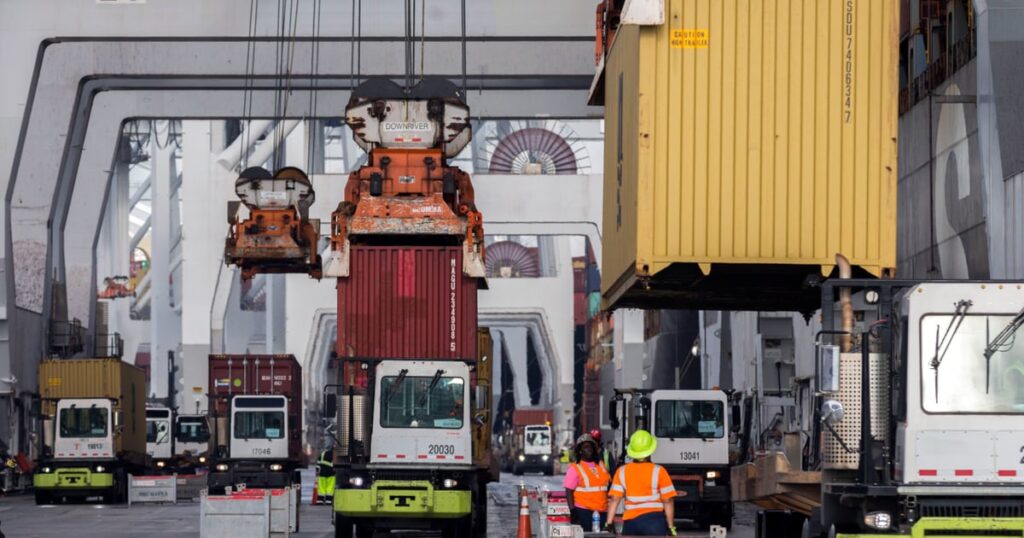The current contract expires Sept. 30, and the union broke off talks with the port authority last week, prompting Harold J. Daggett, president of the International Longshoremen's Association, to warn of a possible strike. Lynch told the Georgia Ports Authority board on Tuesday that the recent surge in activity could be related to shippers moving extra inventory through the ports in preparation for a possible strike — known in the industry as front-loading.
“The boat is rocking,” said Kent Fountain, the agency's chairman. “We're confident we can get stability back, and we think we'll get there sometime this year. And we're nowhere near the front-loaded situation we saw after the pandemic, and it's unpredictable.”
Credit: GPA Photo/Stephen B. Morton
Credit: GPA Photo/Stephen B. Morton
A year of ups and downs
The seas were rough throughout the Port Authority's fiscal 2024, which ended June 30. Container volume was down 2.3% for the year, dropping sharply from July to December 2023 as the supply chain finally caught up to COVID-related demand, before surging from January to June 2024.
Lynch, a 37-year veteran of the shipping industry, noted that port activity tends to be cyclical. The nature of the business is why the Port Authority is sticking with its plan to invest $2 billion in infrastructure improvements, including converting Ocean Terminal near downtown Savannah from a multi-use facility to a container-only facility and building an additional container terminal on an island across from Ocean Terminal.
The recent unpredictability of seaborne trade has not affected growth projections for the nation's third-largest port, which still projects a 3% increase in 2024 compared with cargo activity in 2019, the last fiscal year before COVID-related disruptions.
“We have to be prepared for what's coming,” Fountain said.
Lynch said the Port Authority continues to maintain its market share. Among U.S. ports, Savannah's terminals have grown in each of the past three years, reaching 11.2% by the end of fiscal year 2023. While data for 2024 is not yet complete, Lynch projected Savannah's market share will decrease slightly overall but increase relative to its East Coast port competitors.
Credit: Voyage Creative
Credit: Voyage Creative
Port of Brunswick and India trade show bright spots
Another bright spot for Georgia ports was the performance of Brunswick Terminal, which handles roll-on and roll-off cargo such as automobiles, construction equipment and other heavy machinery. Brunswick finished the fiscal year handling a record 876,000 units, up 21 percent.
Of these, only about 14,000 units were shipped from ships that were diverted to Brunswick when the Port of Baltimore was closed due to the collapse of the Francis Scott Key Bridge, which collapsed after being struck by a cargo ship that lost power while leaving port, killing six construction workers who were performing maintenance on the bridge at the time.
The Georgia Ports Authority also saw an increase in trade with Indian ports last year. Currently, the Port of Savannah receives four ships from India every week, reflecting a shift in manufacturing from China to neighboring countries in Southwest Asia. Ships leaving India sail west to U.S. East Coast ports such as Savannah, rather than east across the Pacific Ocean and through the Panama Canal as China-based vessels do.
Exports to India have grown 60 percent over the past five years and the port authority is actively seeking more business connections, with plans to send a trade delegation to the subcontinent within the next 12 months, Lynch said.
“It's been a small growth so far, but at this rate it will become a big player over time,” Lynch said.



